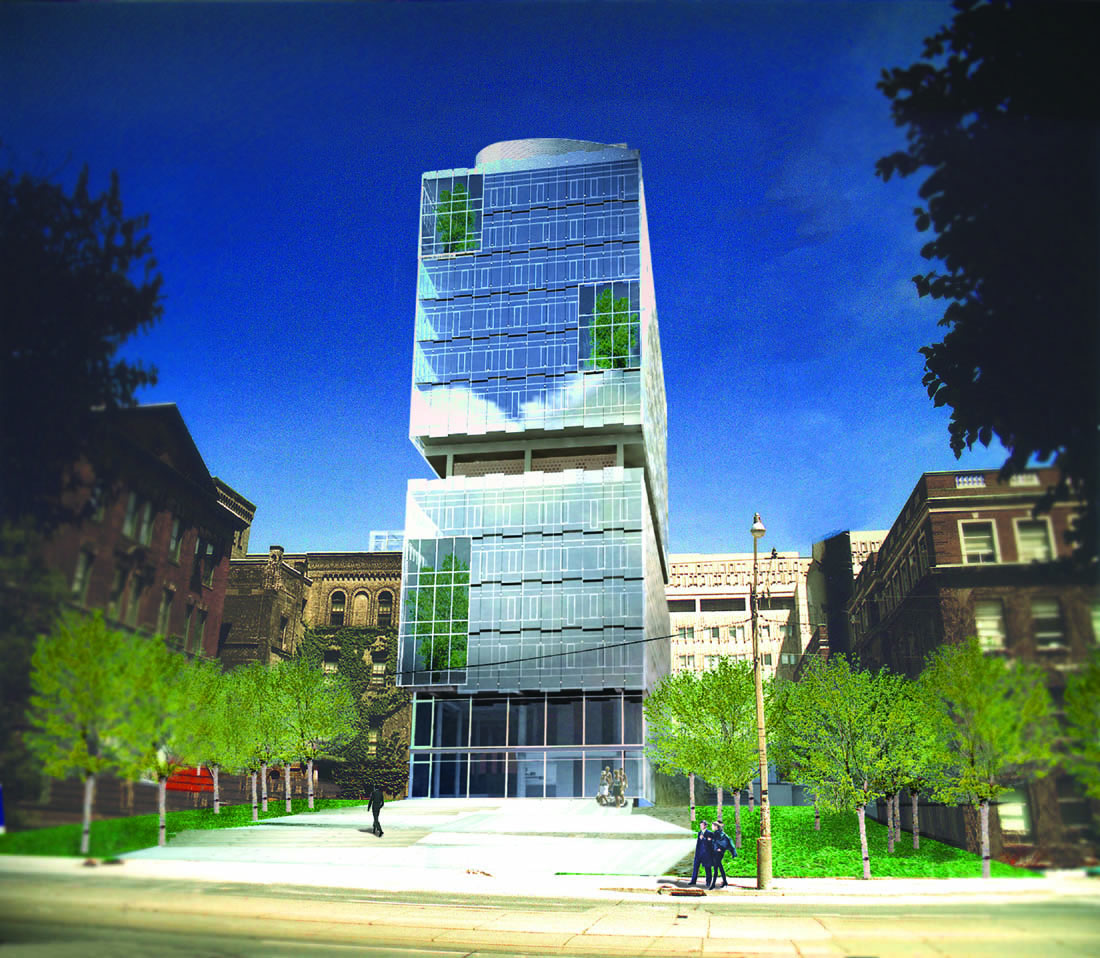Set to open in 2005, the Centre for Cellular and Biomolecular Research (CCBR) is more than a physical structure. It’s a concept, a mindset and a revolutionary approach to tackling the secrets of the human genome.
The striking 12-storey glass tower will function as an intellectual greenhouse where ideas grow into robust research initiatives through multidisciplinary collaboration, says Dr. James Friesen who, along with Dr. Cecil Yip, is an interim co-director of CCBR. About 500 students, faculty members and researchers from the faculties of medicine, pharmacy and engineering will work side by side to uncover the roles played by 30,000 genes in human health and disease.
The $100-million training and research facility will strengthen U of T’s reputation as a leader in post-genome innovation, says Dr. Peter N. Lewis, vice-dean, research, in the Faculty of Medicine. Its location at Taddle Creek Road and College Street is in the middle of the University of Toronto’s growing health-sciences complex, which includes the teaching hospitals, the Leslie L. Dan Pharmacy Building (see below) and the Medical and Related Science (MaRS) Discovery District.
With open-concept labs and extensive informal meeting spaces, the design of the 200,000-square-foot building reflects the centre’s collaborative and multidisciplinary philosophy. “It had to be extraordinarily flexible with respect to its research capabilities,” says Adrian DiCastri of architectsAlliance, who worked on CCBR’s design with Behnisch, Behnisch & Partner of Germany. “The function of each lab can change effortlessly.”
The two award-winning architectural firms incorporated several “green features” into their design, including indoor gardens to improve air quality; exposed concrete ceilings and walls to maximize heating and cooling efficiency; and a soaring glass facade to make use of natural light. (The CCBR is the first building in Canada to have an energy-efficient double-glass facade.)
The university is continuing to seek additional private funding for the building. The Canada Foundation for Innovation and the Ontario Innovation Trust each gave $30 million in grants, and U of T and the Faculty of Medicine jointly contributed about $10 million. Terrence Donnelly (LLD Hon. 2003), a Toronto lawyer and businessman, donated $5 million last year for the atrium that links the CCBR to the Medical Sciences Building. The project broke ground in September 2002.
Recent Posts
U of T’s 197th Birthday Quiz
Test your knowledge of all things U of T in honour of the university’s 197th anniversary on March 15!
Are Cold Plunges Good for You?
Research suggests they are, in three ways
Work Has Changed. So Have the Qualities of Good Leadership
Rapid shifts in everything from technology to employee expectations are pressuring leaders to constantly adapt






